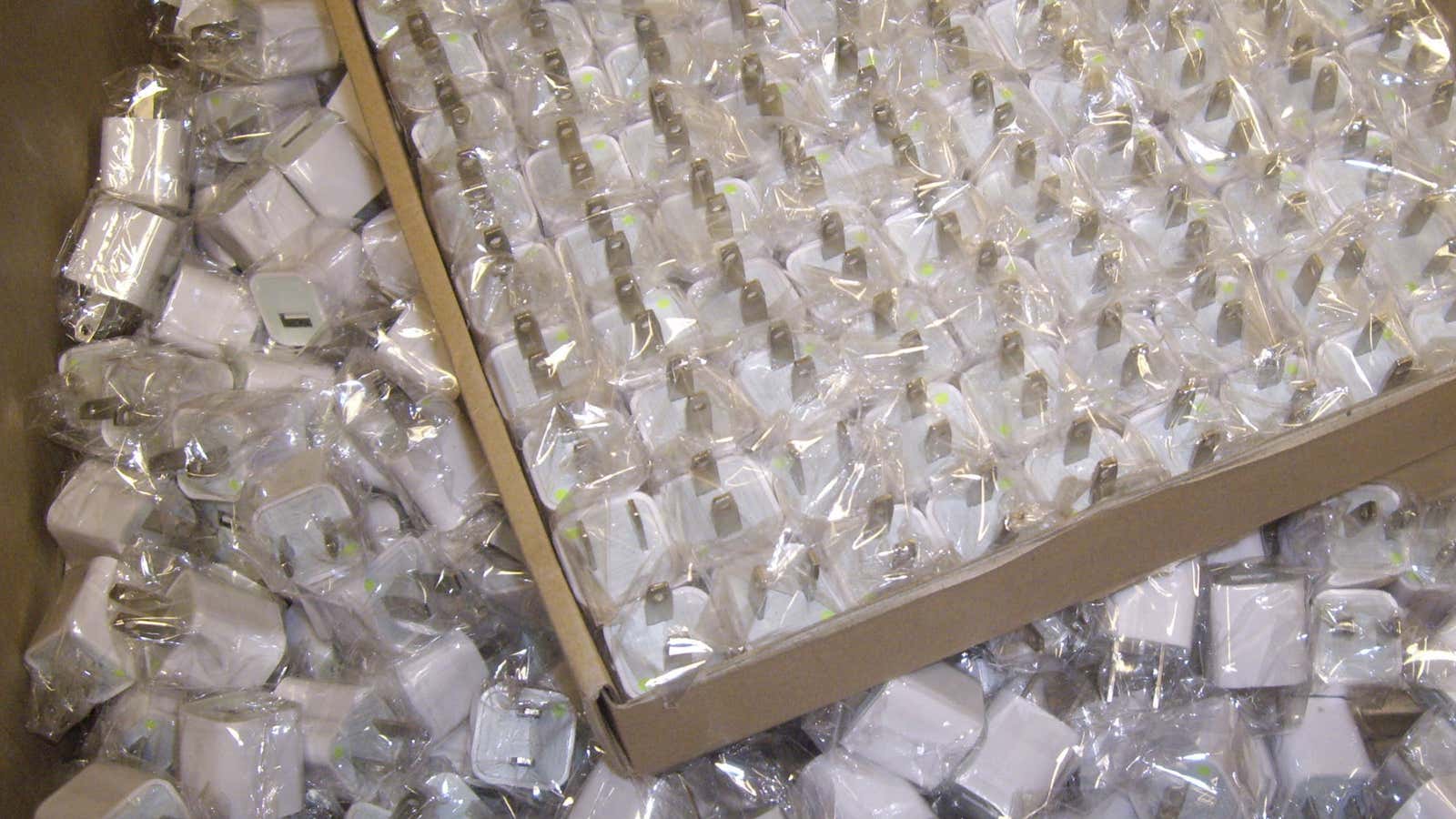Another day, another fake iPhone charger accident. Unlike last week’s incident, which reportedly killed Chinese 23-year-old Ma Ailun, her countryman Wu Jian is still alive but in a coma after his counterfeit iPhone 4 charger gave him a severe shock, causing cardiac arrest and depriving his brain of oxygen.
These accidents happen all the time, and not just in China. Apple sells its basic name-brand chargers for around $20, at what experts say are very healthy profit margins. Meanwhile there are millions of counterfeits on the market selling for a dollar or two—a black market that thrives in part because the real thing is so expensive.
These fakes appear virtually identical to the real thing, although a close inspection of the fine print will often turn up text like “Designed by Abble” or “Designed by California” instead of the authentic “Designed by Apple in California.” Inside they are shoddily made, with many of the advanced safeguards eliminated to cut costs.
An authentic charger is actually a marvel of modern technology. As blogger Ken Shirriff explains:
Internally a charger is an amazingly compact switching power supply that efficiently converts line AC into 5 volt DC output. The input AC is first converted to high-voltage DC. The DC is chopped up tens of thousands of times a second and fed into a tiny flyback transformer. The output of the transformer is converted to low-voltage DC, filtered, and provided as the 5 volt output through the USB port. A feedback mechanism regulates the chopping frequency to keep the output voltage stable. Name-brand chargers use a specialized control IC [integrated circuit] to run the charger, while cheap chargers cut corners by replacing the IC with a cheap, low-quality feedback circuit.
Imitation chargers also don’t have the same overrides that prevent short circuits in the event of overheating or a surge in current.
At the very least, cheap chargers may simply not work. More worryingly, they could damage your phone, overheat, or even cause a fire. At the catastrophic end of the spectrum, the charger could expose your body to a deadly dose of electricity. As Sherriff notes, “There’s 340 volts DC inside the charger, which is enough to kill.”
Making safer chargers isn’t actually that expensive. Sherriff estimates the iPhone 4 Apple charger he reviewed “has about a dollar’s worth of additional components inside,” compared with a similar Samsung charger that sells for $8-10, but Apple’s costs considerably more. The iPhone’s proprietary plugs also stand out since the rest of the smartphone industry is moving toward standardized chargers.
Apple has taken steps to make counterfeiting a bit more difficult with the iPhone 5’s new Lightning connector, which has an authentication chip designed to foil imposters. (The Lightning cable is detachable, so it works with older iPhone chargers.) But it only took Chinese knock-off manufacturers a few months to crack the code and start churning out imitation Lightning cables, as Gizmodo reported. They were laughably low-quality—they were even pieced together with masking tape.
The Lightning connectors were widely derided as an Apple money grab by users whose old iPhone accessories no longer worked without a $10 adapter, creating a huge potential market for both Apple and its counterfeiters. But with every new death or injury from a fake Apple charger that hits the news, saving a few bucks seems like less of a bargain.




